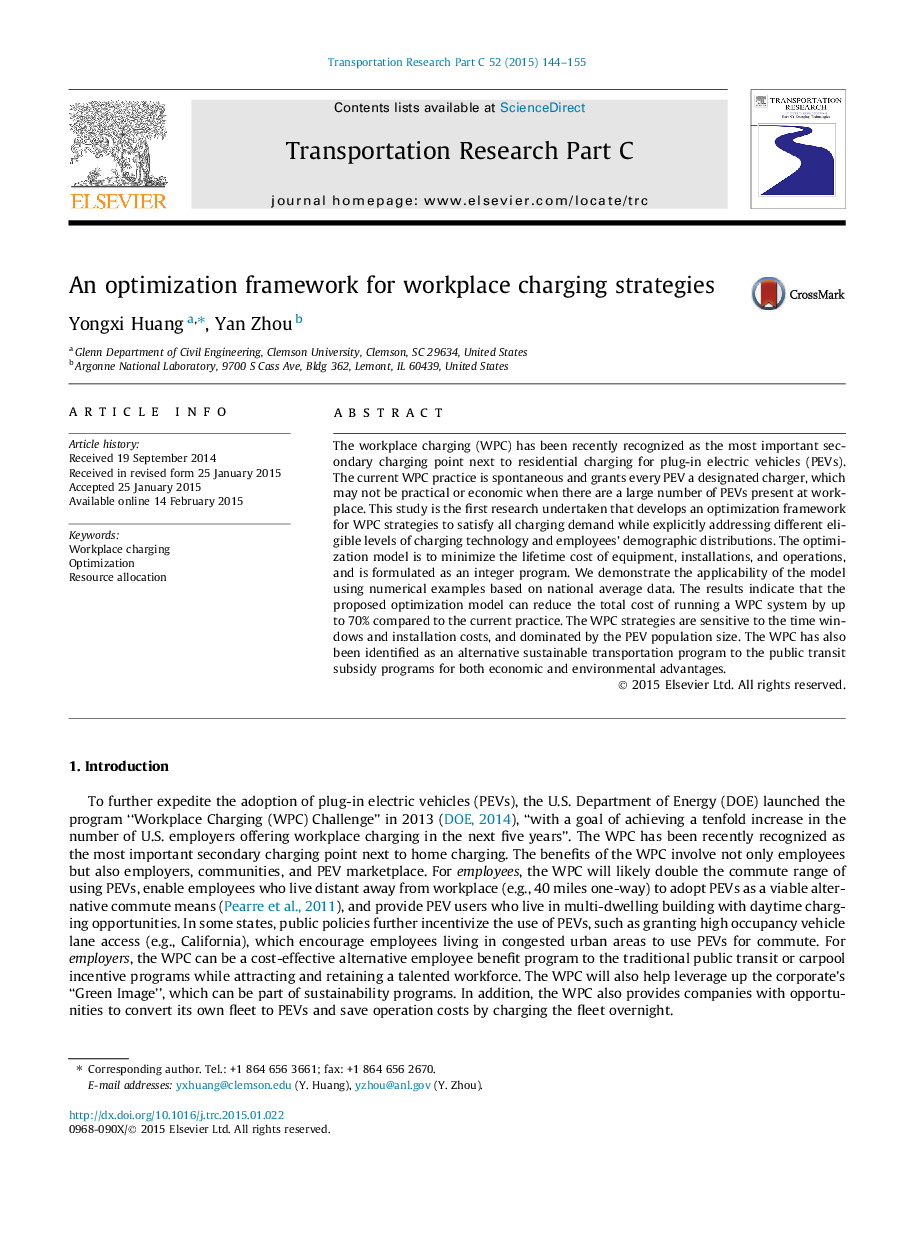| Article ID | Journal | Published Year | Pages | File Type |
|---|---|---|---|---|
| 525050 | Transportation Research Part C: Emerging Technologies | 2015 | 12 Pages |
•An optimization framework is developed for a cost-effective WPC program.•The model minimizes the life-time cost of equipment, installation, and operation.•Numerical examples demonstrate the applicability and generality of the model.•Identify the factors that affect WPC strategies and analyze their impacts.•Illustrate the WPC as a viable alternative sustainable transportation program.
The workplace charging (WPC) has been recently recognized as the most important secondary charging point next to residential charging for plug-in electric vehicles (PEVs). The current WPC practice is spontaneous and grants every PEV a designated charger, which may not be practical or economic when there are a large number of PEVs present at workplace. This study is the first research undertaken that develops an optimization framework for WPC strategies to satisfy all charging demand while explicitly addressing different eligible levels of charging technology and employees’ demographic distributions. The optimization model is to minimize the lifetime cost of equipment, installations, and operations, and is formulated as an integer program. We demonstrate the applicability of the model using numerical examples based on national average data. The results indicate that the proposed optimization model can reduce the total cost of running a WPC system by up to 70% compared to the current practice. The WPC strategies are sensitive to the time windows and installation costs, and dominated by the PEV population size. The WPC has also been identified as an alternative sustainable transportation program to the public transit subsidy programs for both economic and environmental advantages.
